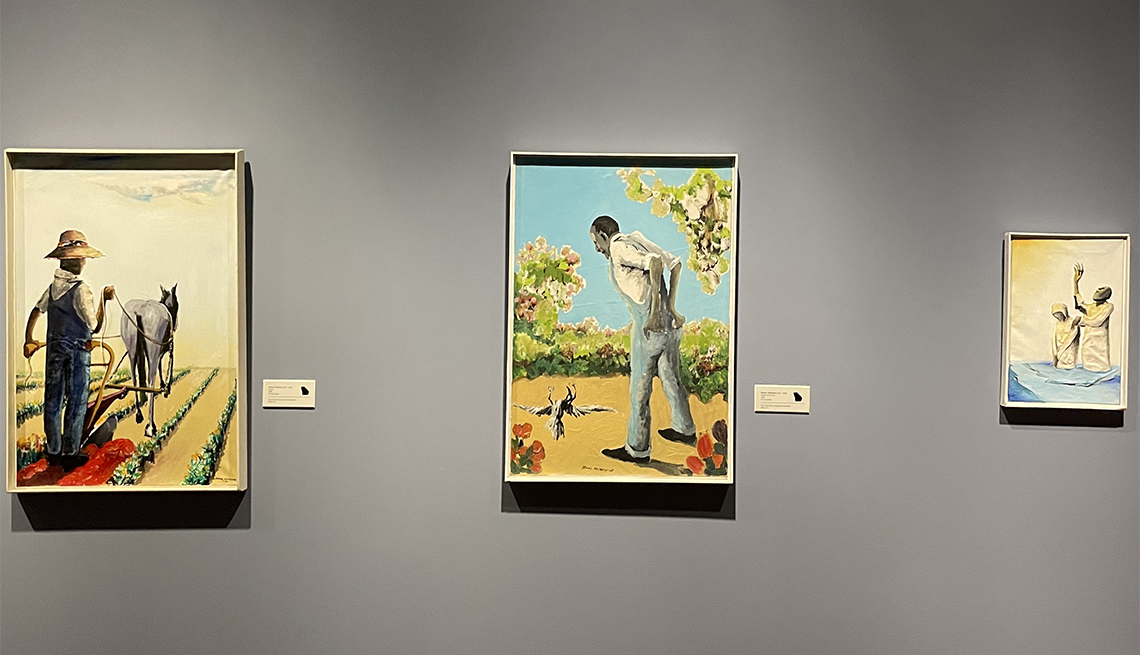Explore American History Through the Eyes of Black Artists in New Orleans
- Select a language for the TTS:
- UK English Female
- UK English Male
- US English Female
- US English Male
- Australian Female
- Australian Male
- Language selected: (auto detect) - EN

Play all audios:

By Kristi Dosh En español Published February 10, 2022
The first enslaved Africans arrived in New Orleans in 1719, one year after the city’s founding. In the proceeding 300-plus years, Blacks’ impact on the city has helped it become one of the
world’s most culturally diverse and exciting places to explore.
“Every aspect of culture in New Orleans is tied to the Black experience,” says Bradley Sumrall, a curator at the city’s Ogden Museum of Southern Art in the Warehouse Arts District, just
outside the French Quarter. “The food for which we’re so famous was heavily influenced by African traditions, American music was born here, and its architects were almost exclusively Black.
Dance, theater, literature and the visual arts are all deeply informed by the Black experience in New Orleans.”
Visit the Ogden — a 47,000-square-foot, five-story facility — in this fantastic city and treat yourself to one of the country’s finest collections of work by Black artists, across all
mediums.
Depicting life in the rural SouthShowcasing Black artists through its acquisitions and exhibitions has been the primary focus of the Ogden since its opening in 2003. Legendary Black artist Benny Andrews even served as the
first artist-member of its Board of Trustees. “Not only was he a huge voice in American art, but he was an advocate who championed the inclusion of women and artists of color in museum
collections,” Sumrall says. “He brought those concepts into the very conceptual planning of the Ogden and its mission.”
The Ogden now holds the largest public collection of Andrews’ work — 242 drawings, watercolors and oil paintings — many of which you can see in a gallery dedicated to this essential painter
and activist, who died in 2006. In his best known and most powerful works, Andrews brilliantly delivers figurative paintings of Black people living in the rural South, the very life he
himself lived, having been born in Plainville, Georgia, in 1930. Viewing his art, you’ll likely feel empathy for his subjects because, through his skillful brushwork, he shares their
burdens, their hunger, their toil, their concerns. He doesn’t put viewers just in the scene, but also in his subjects’ souls. You feel their humanity.
One standout: his 1965 “Death of the Crow.” Although the 1964 Civil Rights Act ended the Jim Crow era of legal segregation around the nation, the figure in Andrews’ painting seems skeptical.
The “crow,” with outstretched talons and a pointy beak, may have fight in it yet — and history would prove the artist’s suspicion correct.
No formal trainingDiscover additional talent as you wander through the Ogden’s other galleries. Much of what you’ll see falls into the category of vernacular art, meaning the work of self-taught artists. Not
surprisingly, Black artists — so many of them denied formal art educations — fill this category. Their work provides plainspoken insight into the 20th century Black experience throughout the
South.